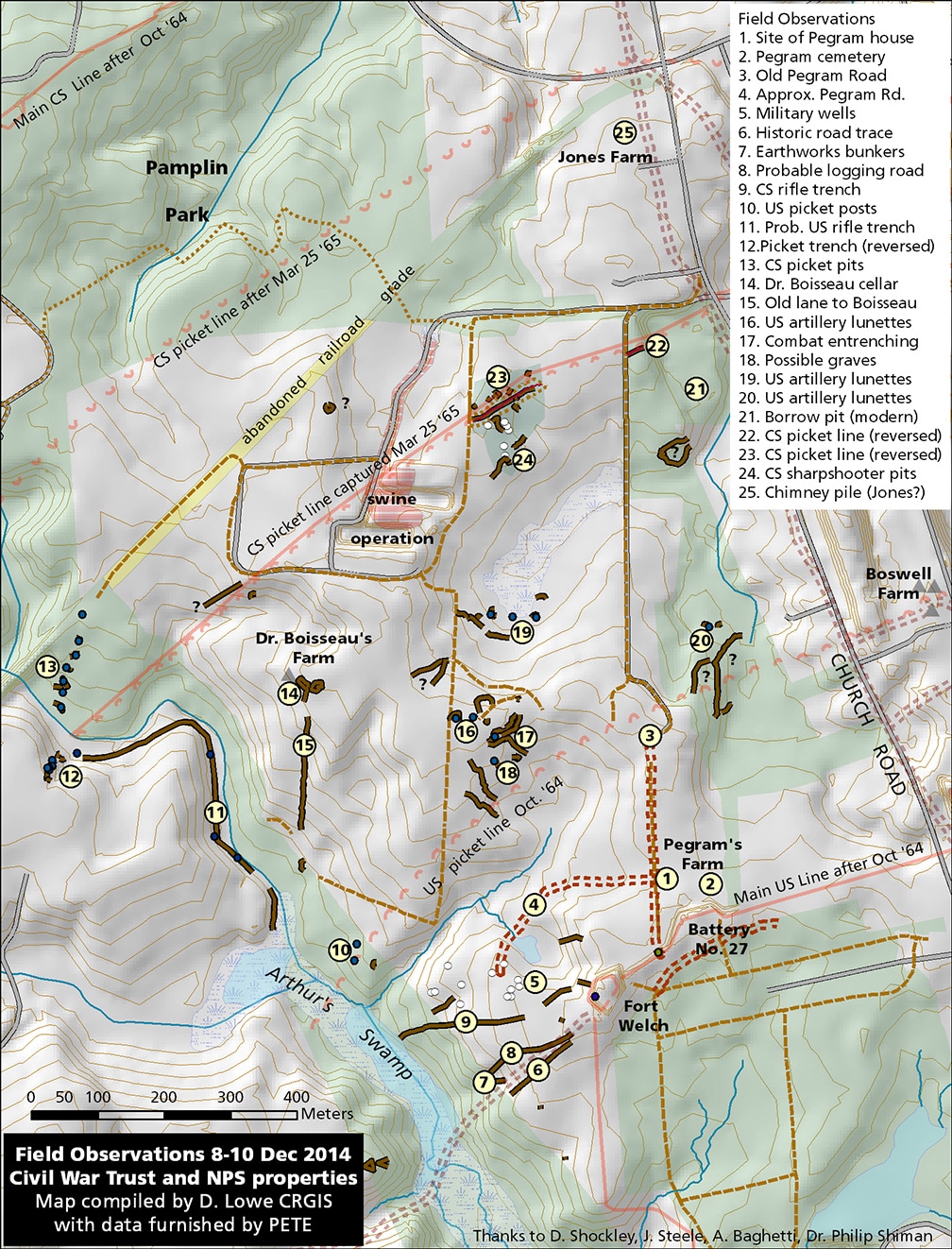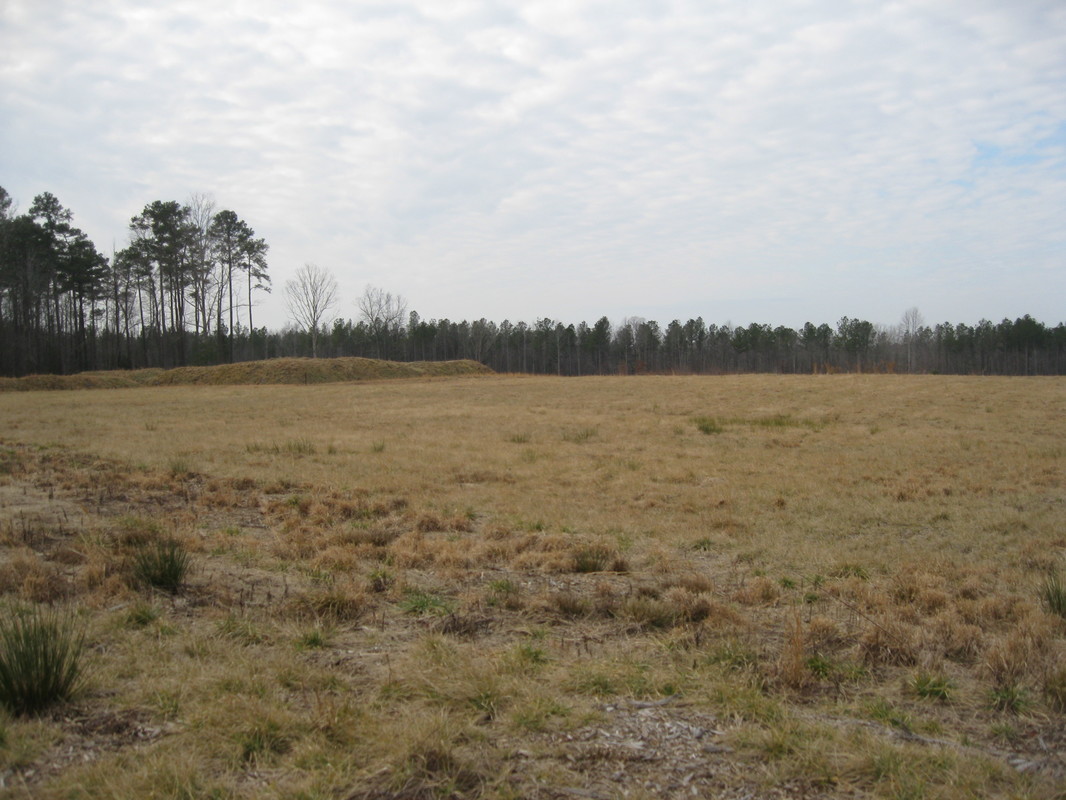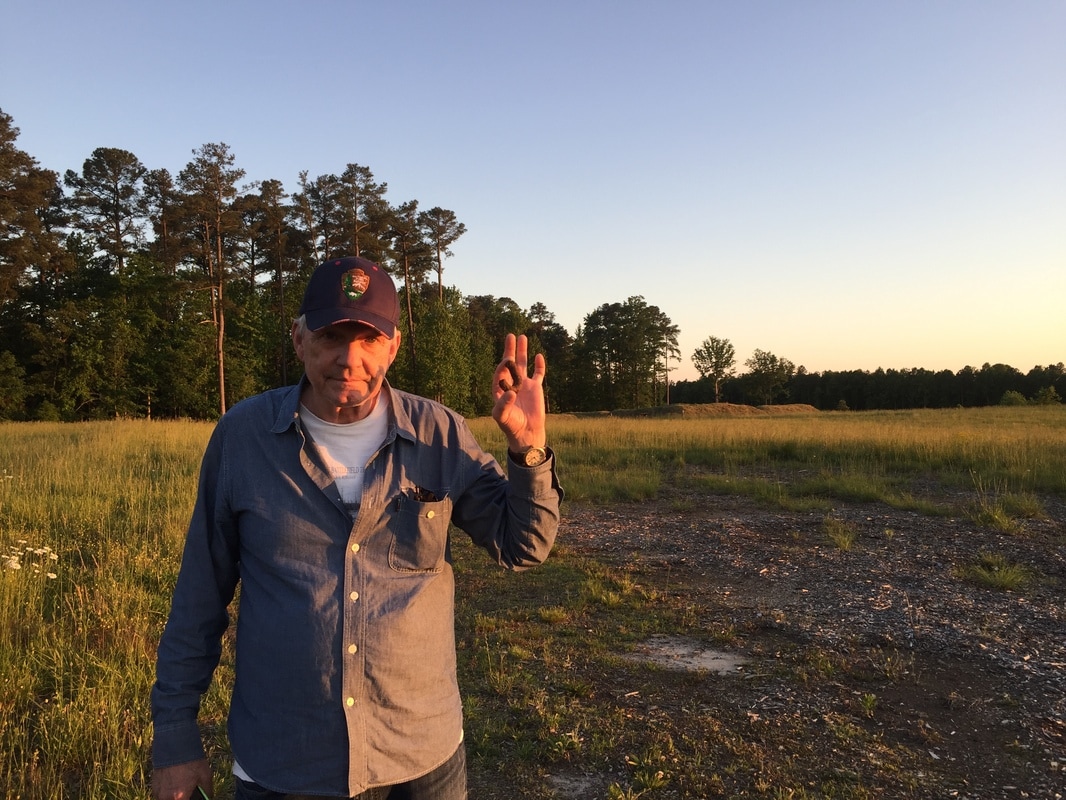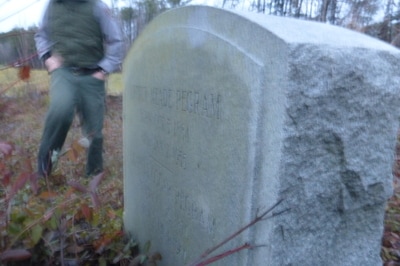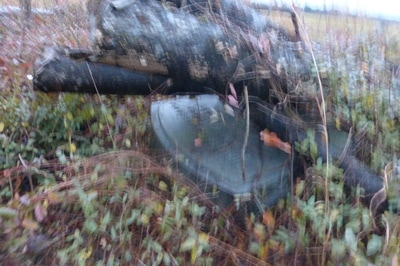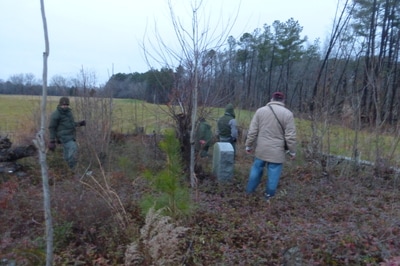Pegram's Farm
IX Corps, Peebles and Pegrams Farms Oct. 1864
This map was produced from a recon conducted in December 2014 with David Lowe, Philip Shiman, Dave Shockley, Julie Steele, and Adam Baghetti -- Petersburg National Battlefield and Cultural Resources GIS cooperating. No. 1 marks the approximate site of the Pegram house (no visible remains). No. 2 marks the Pegram Cemetery with fence and existing gravestones. The fighting at Pegram's Farm (October 2, 1864) extended from Peebles Farm (off the map to the south) across the Pegram farm to the Dr. Boisseau farm and Jones Farm to the north. The site of the Boisseau house (no. 14) is marked by a cellar excavation. There is a chimney pile at the site of the Jones house (no. 25).
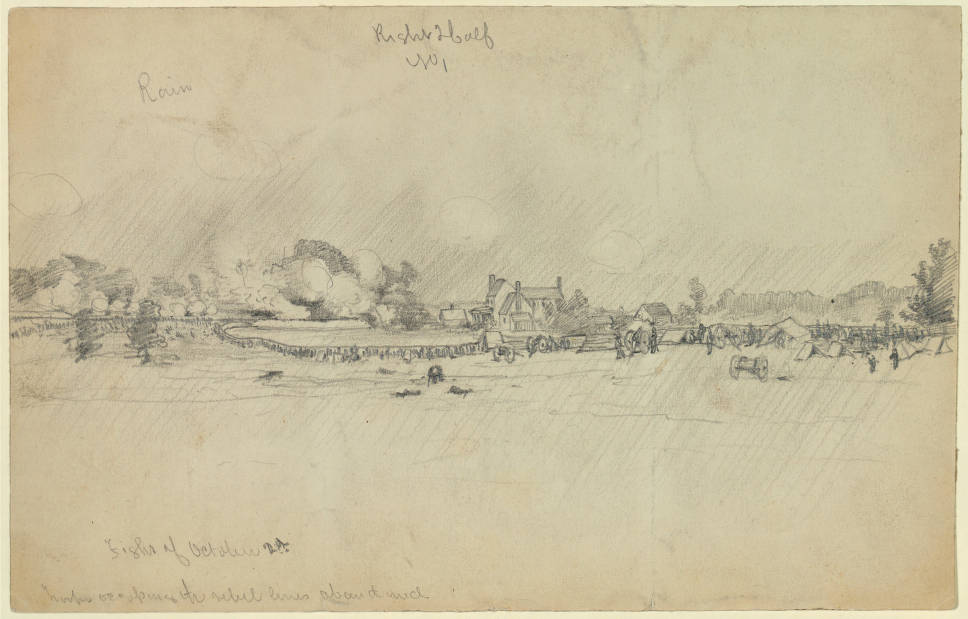
"Fight of Oct. 2d, 1864," artist unknown, in collection of art sent to Frank Leslie's Illustrated newspaper at the New York Historical Society. The sketch was not published. Inscribed at lower left: "Fight of October 2d./troops occupying the rebel lines about mid." That is likely the Pegram house in the mid-ground. The house and outbuildings were afterwards burnt to the ground.
 Sketch by Charles H. Chapin, woodcut published in Harper's Weekly, November 5, 1864.
Sketch by Charles H. Chapin, woodcut published in Harper's Weekly, November 5, 1864.
Pegram house ruins after the fire as sketched by C. H. Chapin and published as a woodcut. Fort Welch (left) was built on the site. Fort Welch survives in very good condition. Of the Pegram house, there is no trace but for the cemetery. It is a safe bet that the bricks were soon looted to provide chimneys and floors for the soldiers' winter quarters.
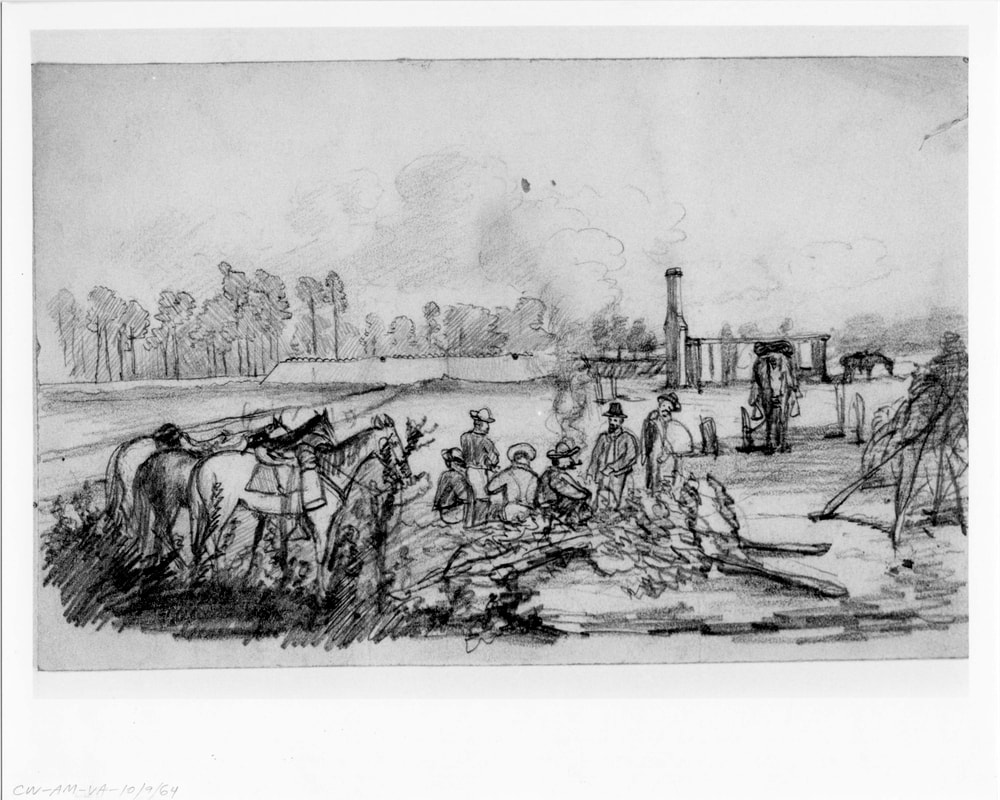
Siege of Petersburg - Outside the Lines of the New Position near Southside Railroad. Verso- "outside the lines of the new position near South Side RR looking back at a new post from the Cavalry Picket post October 9,
1864."
Andrew McCallum, Becker Collection
https://beckercollection.bc.edu/items/show/3011

